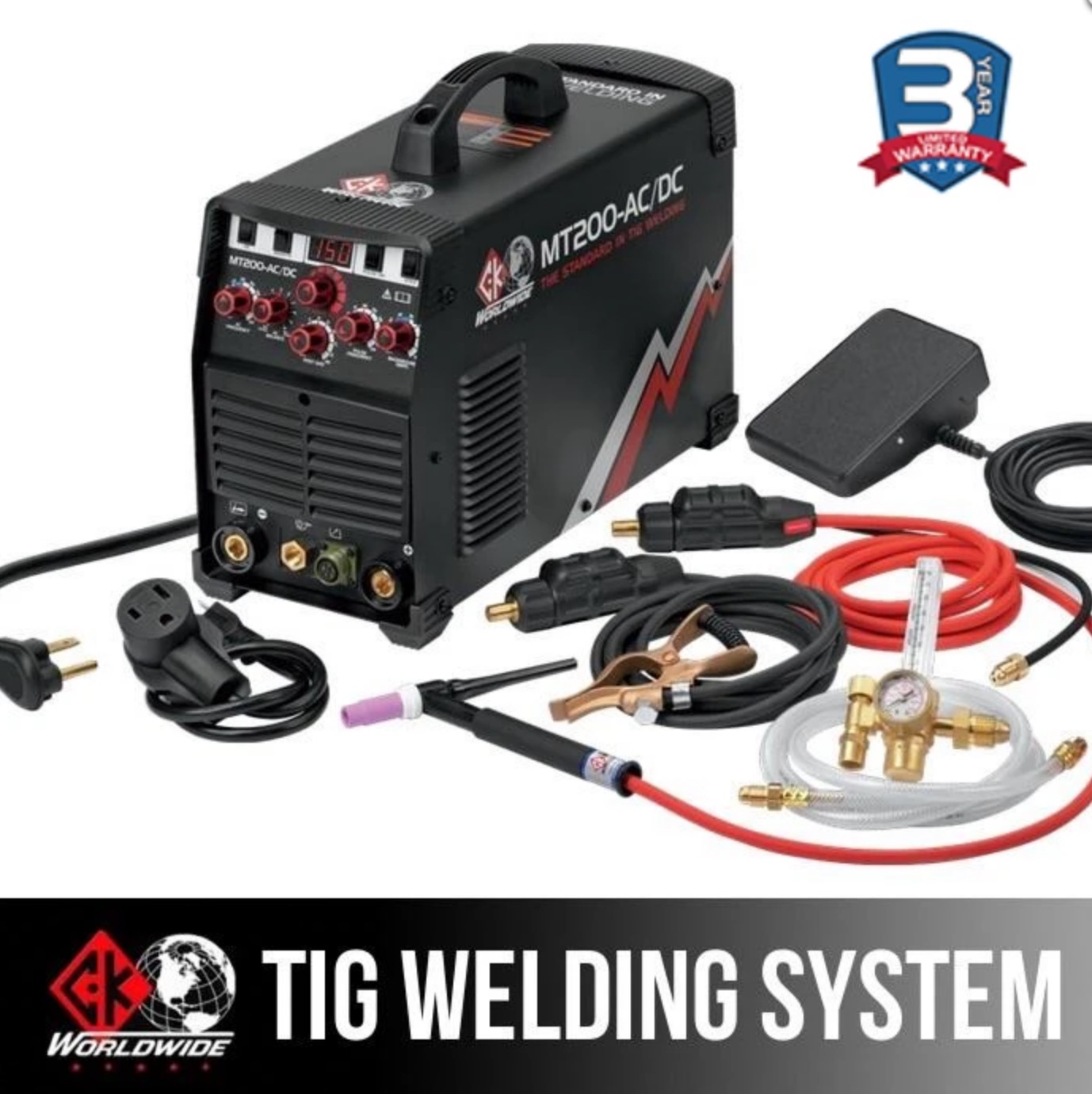TIG Welding Basics part 1
18 different welding jobs done with the welder below.
4130 chromoly, aluminum, stainless, and tig brazing with silicon bronze
This is part 1 of a How to Tig Weld- Basics series.
When you are ready for more you can get there from right here
So the plan here is to do a BIG BIG overview of Tig welding in this video and then to follow up with lots more videos covering TIG machines, TIG torches, tig electrodes, filler rods, techniques, and also, welding all kinds of metals.
Scratch start tig weld basics
Scratch start Tig is the most basic setup for Tig welding but is not the best all around.
It is still used a lot in construction for welding pipe and tubing ... carbon steel, stainless steel, and even other alloys like inconel.
Its simple, and it works, but its not necessarily the best way to get started learning how to tig weld.
Starting an arc is not the problem with scratch start tig...there are ways to start the arc without contaminating the tungsten.
By using a piece of copper placed next to where you want to start the arc, lighting up without leaving tungsten inclusions is pretty easy.
There is also a trick where you use the tip of the filler rod to start the arc.
The problem is not starting...but stopping the arc without leaving oxidation, crater holes, or even crater cracks.
Lift Arc TIG
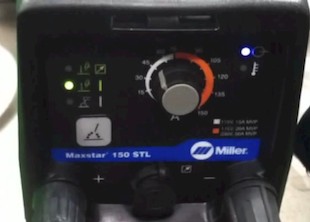
Just like the name implies, Lift arc tig starts the arc when the electrode touches the metal being welded.
Some lift arc tig welders like the Miller maxstar 150stl are engineered with a solenoid valve that allows argon to flow when the tungsten touches.
Along with that, a very low electrical current is used up until the tungsten touches. Then the machine goes to the amperage set on the dial so its a bit safer for the welder who accidentally touches the tungsten while grounded.
The Miller Maxstar can also be used with a torch amperage control or foot pedal.
Multiprocess Welder & Lift Arc Tig
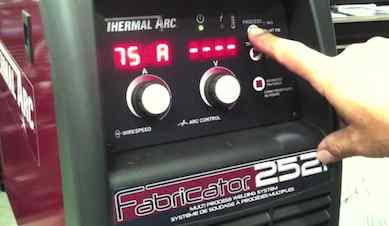
Something kinda new on the scene are Multiprocess welders that do MIG, STick, and lift arc DC TIG.
It helps to think of these welders as Mig welders that can also Stick weld, and do lift arc Tig as a bonus.
I have done a lot of job shop type work over the years and most of it has been stainless steel or low alloy steel.
A lot of it could have been done with a Multiprocess welder using the lift arc tig function.
But "lift arc" would not have been the best way.
I always prefer to use a high freq start tig welder if I can.
And even though a multiprocess mig, tig, stick welder is more versatile than either a pure mig welder, or stick welder...Tig welding aluminum is still not an option. You really need an AC/DC tig welder with hf for that.
DC TIG inverter with HF start
There are several DC only TIG inverters on the market in the 150-160 amp rage with high freq start.
These machines are very useful because not only can they handle thin chromoly tubing or thick steel using multipass welds, but they can also stick weld.
The DC tig welder in the video is an everlast 160sth and it is extremely small, portable and capable. It burns 7018 rods nice and easy.
But there are limitations.
Basic AC/DC Tig inverters
The most well known no frills AC/DC tig inverter is the Miller Diversion.
The only settings on the Diversion are amperage, and material type (which is actually polarity).
Miller went after the novice market and made the Diversion with default settings that the welder cant access.
Also the tig torch is hard wired to the machine.
AC/DC Tig welders with full features
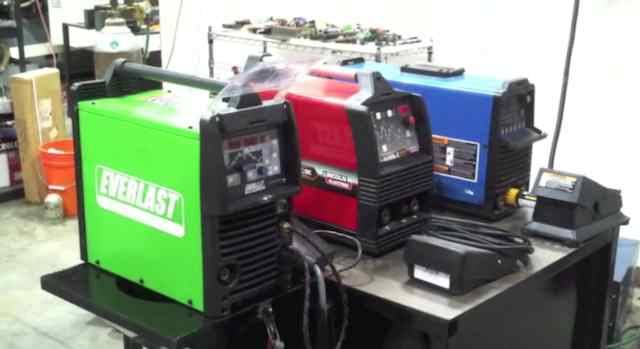
AC/DC Tig inverters in the 200 amp range are extremely popular and with good reason.
Most of the job shop tig work I have done over the last 10 years has been done using a 200 amp AC DC tig inverter.
My first experience with one of these 200 amp inverters was the Lincoln Invertec V205t.
I was working for a major airline and there was quite a bit of welding done in the hangar.
With a big syncrowave 250 on a cart, Finding a plug took longer than making the weld.
Then Lincoln was first on the US market with a full featured AC/DC dual voltage tig welder.
I ordered one and it did a good job for us.
Later on , Miller came out with their Dynasty 200dx that was also dual voltage but my experience was that the Lincoln could easily handle .125" (3.2mm) thick aluminum when using 115volt power.
The Dynasty would pop a breaker after only a few inches of weld.
Maybe its different now. But at the time, that invertec kicked the dynastys butt on 115 volt aluminum welding.
Ready to see part 2 of TIG Basics?
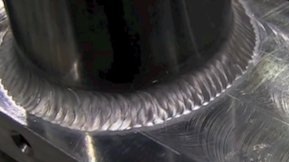
watch more tig welding videos


